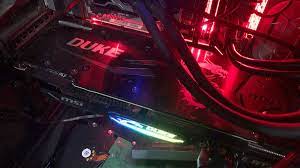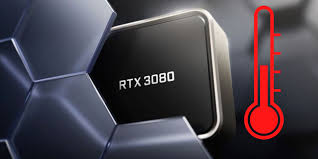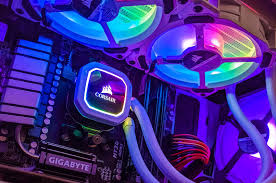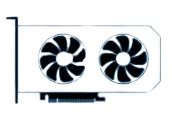Managing your GPU’s temperature is crucial for maintaining its performance and longevity. As gamers and PC enthusiasts push their hardware to its limits, understanding how hot is too hot for a GPU becomes essential. One common temperature threshold that sparks concern is 80 degrees Celsius.
Yes, 80 degrees Celsius is hot for a GPU. While most GPUs can handle this temperature, it can shorten the GPU’s life if it stays this hot for a long time. It’s better to keep the GPU cooler, around 70 degrees Celsius or lower, for better performance and lifespan.
In this article, we will discuss “Is 80 Degrees Celsius Hot For A GPU”.
Table of Contents
Understanding GPU Temperature Ranges:
1. Safe Temperature Range:
Most GPUs are designed to operate safely at temperatures up to 85-90 degrees Celsius. However, staying within the 60-70 degrees Celsius range during regular use is ideal to ensure longevity.
2. Optimal Temperature Range:
For peak performance, aim to keep your GPU within the 65-75 degrees Celsius range. This ensures that the GPU performs efficiently without risking damage from prolonged high temperatures.
3. Maximum Temperature Limit:
Exceeding 90 degrees Celsius can be dangerous for your GPU. At this point, many GPUs will start to throttle performance to cool down, which can affect your computer’s overall speed and responsiveness.
Factors Affecting GPU Temperature:

1. Workload and Usage:
Heavy tasks like gaming, 3D rendering, and video editing can push your GPU to its limits, increasing temperatures significantly. Monitoring your usage and adjusting settings can help manage heat.
2. Ambient Room Temperature:
The temperature of your room also affects your GPU. A cooler room helps keep your GPU at a safer temperature, while a hot environment can exacerbate overheating issues.
3. Cooling Solutions:
The type of cooling solution you use plays a significant role in managing GPU temperatures. Options range from standard air cooling to more advanced liquid cooling systems.
Effects of High GPU Temperatures:
1. Performance Issues:
High temperatures can cause your GPU to throttle, reducing its performance to prevent overheating. This can result in lower frame rates and slower processing times.
2. Potential Hardware Damage:
Prolonged exposure to high temperatures can damage your GPU’s components, leading to permanent performance degradation or complete failure.
3. Thermal Throttling:
Thermal throttling is a safety mechanism where the GPU reduces its speed to cool down. While this prevents immediate damage, it can affect your overall computing experience.
Read: Is Cod CPU Or GPU Intensive – A Comprehensive Guide of 2024!
Cooling Solutions for GPUs:
1. Air Cooling:
Air cooling uses fans to dissipate heat from the GPU. It’s a cost-effective and common solution but may not be sufficient for high-performance or overclocked GPUs.
2. Liquid Cooling:
Liquid cooling systems are more efficient at transferring heat away from the GPU. These systems can handle higher temperatures and workloads but are more expensive and complex to install.
3. Additional Fans:
Adding more fans to your computer case can improve airflow and help maintain lower GPU temperatures. Proper placement is key to maximizing their effectiveness.
Read: Is 50 Celsius Hot For A GPU – Comprehensive Guide Of 2024!
Tips for Maintaining Optimal GPU Temperature:
1. Regular Cleaning:
Dust and debris can clog your GPU’s cooling system, reducing its effectiveness. Regularly cleaning your GPU and computer case can help maintain optimal temperatures.
2. Proper Ventilation:
Ensure your computer case has adequate ventilation. Poor airflow can trap heat inside the case, raising the GPU’s temperature.
3. Monitoring Software:
Use monitoring software to keep an eye on your GPU’s temperature. Programs like MSI Afterburner or HWMonitor provide real-time temperature readings and alerts.
Read: Is It Okay For My GPU To Be At 100 – Complete Guide – 2024
When to Worry About GPU Temperature:
1. Warning Signs:
Frequent crashes, graphical glitches, and sudden shutdowns are signs that your GPU might be overheating. Take action immediately if you notice these issues.
2. Preventive Measures:
To prevent overheating, regularly maintain your cooling system, monitor temperatures, and avoid pushing your GPU beyond its recommended limits.
Read: Is 74c Bad For GPU – A Complete Guide Of 2024!
Upgrading Your GPU Cooling System:
1. Identifying When Upgrades Are Necessary:
If your GPU consistently runs hot despite good airflow and maintenance, it might be time to upgrade your cooling system. Look for signs like frequent thermal throttling and performance drops.
2. Best Practices for Upgrading:
When upgrading, consider your GPU’s needs and your budget. High-performance GPUs may benefit more from liquid cooling, while mid-range GPUs might do well with enhanced air cooling.
Future of GPU Cooling Technologies:
Innovations on the Horizon:
The future of GPU cooling looks promising, with advancements in materials and design leading to more efficient and quieter cooling solutions. Keep an eye out for innovations that can help keep your GPU cool and efficient.
How to Monitor Your GPU Temperature?
Monitor your GPU temperature by using software like MSI Afterburner or HWMonitor. These tools show real-time temperature readings, helping you keep your graphics card cool and avoid overheating issues.
What’s a Good GPU Temperature?

A good GPU temperature is between 65-85°C (149-185°F) while gaming. For idle times, it should be lower, around 30-40°C (86-104°F). Keeping these temperatures helps your GPU run well.
Read: Is 100 GPU Usage Bad – A Complete Guide Of 2024!
Do You Need a GPU for Gaming?
Yes, you need a GPU for gaming. It makes graphics look better and helps games run smoothly. Without a GPU, you may experience slow performance and poor visual quality.
Read: Is 82 Degrees Hot For GPU – A Comprehensive Guide Of 2024!
What Does a High GPU Temperature Mean?
A high GPU temperature means your graphics card is working hard, which can cause overheating. Overheating may lead to reduced performance, crashes, or damage. Ensure good airflow and cooling to keep temperatures down.
Read: Is 30 degrees idle good GPU – Ultimate Guide of 2024!
How to Lower Your GPU Temperature?
Lower your GPU temperature by cleaning dust from fans, improving airflow in your case, and using better thermal paste. Adjusting fan speeds and reducing graphics settings in games can also help keep it cooler.
What Is a Normal GPU Temperature for Gaming?
A normal GPU temperature for gaming is between 65-85°C (149-185°F). This range ensures your graphics card works well without overheating. Keeping it within these limits helps maintain good performance and longevity.
Is 75-80c too hot for gpu underload?
No, 75-80°C is not too hot for a GPU under load. This temperature range is normal for gaming and heavy tasks. However, ensure good airflow and cooling to avoid higher temperatures.
Is 80 C too hot for a GPU?
No, 80°C is not too hot for a GPU. It is normal during gaming or heavy tasks. However, ensure good cooling to prevent it from getting hotter and to maintain performance.
Is 80 degrees Celsius hot for GPU gaming?
No, 80 degrees Celsius is not hot for GPU gaming. It is normal during heavy use. Just ensure good cooling to keep it from getting hotter and maintain stable performance.
Is 80 degrees normal while gaming?
Yes, 80 degrees Celsius is normal while gaming. It’s a common temperature for high usage. Just make sure your cooling system is working well to keep it at this level and prevent overheating.
Is 80 degrees Celsius hot for a GPU Nvidia?
No, 80 degrees Celsius is not too hot for an Nvidia GPU. It is normal during heavy use. Just ensure your cooling system is effective to maintain this temperature and avoid overheating.
Is 80 degrees Celsius hot for an RTX 3060?
No, 80 degrees Celsius is not too hot for an RTX 3060. It is normal under heavy use. Ensure your cooling is good to keep it at this temperature and avoid overheating.
Is 82 Degree hot for GPU?
Yes, 82°C is warm for a GPU. It can still work, but running at this temperature for long periods might reduce its lifespan. Try to keep it cooler with good airflow and cleaning.
Is 80-83degrees ok for a gpu while playing?
Yes, 80-83°C is okay for a GPU while playing games. It’s a bit warm but safe. Ensure your computer has good airflow and is clean to keep the temperature under control.
Is 85 degrees Celsius hot for a GPU?
Yes, 85°C is hot for a GPU. It can still work, but this temperature is close to the limit. Keep your computer cool with good airflow and regular cleaning.
Is 90 degrees Celsius hot for a GPU?
Yes, 90°C is very hot for a GPU. It can cause damage if it stays this hot for long. Ensure your computer has good airflow and is clean to prevent overheating.
GPU Temperature… What is good?
A good GPU temperature is 60-70°C during use. It can go up to 80°C, but keeping it cooler is better. Ensure good airflow and clean your computer to maintain safe temperatures.
Is 80 degrees Celsius hot for a CPU?
Yes, 80°C is hot for a CPU. It can still work, but this temperature is close to the limit. Ensure good airflow and clean your computer to keep the temperature lower.
Is 80 degrees Celsius hot for a CPU while gaming?

Yes, 80°C is hot for a CPU while gaming. It can still work, but try to keep it cooler. Ensure your computer has good airflow and is clean to prevent overheating.
FAQs:
1. What is a safe temperature for a GPU?
A safe temperature for most GPUs is up to 85 degrees Celsius under load, but aiming for 60-70 degrees Celsius is ideal for long-term use.
2. Can high temperatures damage my GPU?
Yes, prolonged exposure to high temperatures can cause hardware damage and reduce the lifespan of your GPU.
3. How often should I clean my GPU?
It’s a good idea to clean your GPU and computer case every few months to prevent dust buildup and maintain optimal cooling.
4. What are the best cooling solutions for GPUs?
Air cooling is common and cost-effective, while liquid cooling offers more efficient heat dissipation for high-performance GPUs.
5. How do I know if my GPU is overheating?
Signs of overheating include frequent crashes, graphical glitches, and sudden shutdowns. Monitoring software can also provide real-time temperature alerts.
Conclusion:
In conclusion, while 80 degrees Celsius is manageable for most GPUs, it’s best to aim for lower temperatures to ensure optimal performance and longevity. Keep your GPU cool by maintaining good airflow, using effective cooling solutions, and regularly cleaning your system to prevent overheating and potential damage.

I’m Noah Lucas, the voice behind the content you find here. With 5 years of experience in the GPU field, my goal is to provide clear and helpful information to everyone interested in this technology.
Whether you’re new to GPUs or looking to deepen your understanding, my articles aim to break down complex topics into simple, easy-to-understand language. This way, no matter where you’re from, you can find the information you need without any confusion.

